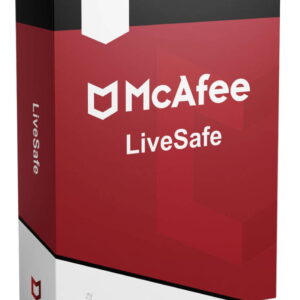The discontinuation of backing for CentOS Linux, the debut of CentOS Stream, and the transforming Red Hat Enterprise Linux environment.
As of June 30, 2024, CentOS Linux 7 came to its end of life – this signifies the cessation of security patches, feature enhancements, or bug fixes for any editions of CentOS Linux. Red Hat has presented multiple routes for migration, however, if you are following the Red Hat blog, you are likely already informed about these alternatives. However, the focus shifts towards the future of the CentOS Project, which remains a pivotal driver of the entire Red Hat Enterprise Linux (RHEL) framework.
To clarify, CentOS Linux no longer functions. CentOS Stream was established to allow involvement in alterations to mainstream RHEL and as a foundation for the undertakings in CentOS Project special interest groups (SIGs), offering a quicker feedback loop into RHEL engineering and a preview into RHEL’s forthcoming developments.
With the inaction of CentOS Linux, any maintenance of CentOS Linux available in the market, from any vendor or source, pertains to a fork. Users must recognize that this maintenance or technology stands entirely disconnected from the CentOS Project, Red Hat, and the RHEL ecosystem. Even if code is derived from CentOS Stream, it lacks the aforementioned services like backporting, quality engineering, hardening, support, and security analysis provided by Red Hat.
The driving force behind Enterprise Linux innovation
If you are not acquainted, CentOS Stream establishes a midway point in the RHEL development cycle. Progressions in the Linux kernel and supporting elements transition to the Fedora Project, which wraps and delivers the pioneering Fedora Linux operating system every half-year. These advancements periodically find their way downstream – not directly into RHEL but via CentOS Stream, and subsequently into RHEL.
Within this development model involving CentOS Stream, we are better equipped to transparently and openly construct the forthcoming versions of the globe’s top enterprise Linux platform. Beyond showcasing the build process, CentOS Stream empowers the larger community, whether Red Hat customers, partners, or individual contributors, to shape these future distributions of RHEL. This epitomizes the untapped potential of the CentOS Project – providing a space for user input to influence forthcoming enterprise Linux endeavors.
This denotes that hardware providers can test and submit new drivers for upcoming hardware, ISVs can trial integrations of fresh applications, and customers can employ CentOS Stream builds to ready and strategize for future RHEL updates. CentOS Stream is also home to various SIGs that concentrate on particular enterprise Linux usage scenarios. These encompass (though are not restricted to):
- The Hyperscale SIG focuses primarily on CentOS Stream implementations on large-scale infrastructure and collaboration on supporting packages and tools.
- The Automotive SIG endeavors to furnish preliminary versions of Red Hat In-Vehicle Operating System for testing and integration within the CentOS Stream community.
- The Virtualization SIG strives to supply a complete stack of virtualization technologies, from distribution and deployment to management and lifecycle, creating on CentOS Stream.
This solely captures the teamwork and ingenuity being propelled in CentOS Stream, as customer, partner, and individual contributions and feedback aid Red Hat engineers in crafting future renditions of RHEL. CentOS Stream transcends being merely consumable; it serves as a direct channel to shape the next advancements in enterprise Linux.
Diverse operating system choices in a unified enterprise ecosystem
For Red Hat, an enterprise-tier Linux platform implies enterprise-grade assistance, unchanging code quality and fortification, a devoted product security squad, and a predictable lifecycle. Throughout almost three decades, we have engineered RHEL to these benchmarks, significantly contributing to its popularity as the most favored enterprise Linux platform.
We recognize that not every situation necessitates this level of operational assurance, hence within the RHEL ecosystem, there are abundant options to accommodate specific requirements spanning support, innovation, and uniformity. Nonetheless, the shared element amidst all these offerings is that they dwell on the evolution path to RHEL – the closer a component resides to RHEL, the more scrutiny and updates it typically garners, whereas the closeness to the Linux kernel a distribution stands, it foregoes this scrutiny and heightened uniformity for newer technology and features.
For developers and end users seeking the newest in Linux advancements, Fedora Linux (compiled and managed by the Fedora Project community) caters to this need. Fedora Linux presents various latest and best open-source innovations in a free and wholly open operating system, offering editions suited for developers, desktop users, server administrators, and more.
CentOS Stream provides an avenue for those seeking a Linux platform sharing the RHEL code base but offering a forward-thinking outlook on enterprise Linux. Given the close association of CentOS Stream with Red Hat engineering cycles, the distribution suits well for development and proof-of-concept activities that will eventually run on RHEL.
Lastly, the Red Hat Developer subscription accords no-cost admittance to self-supported RHEL. Developer subscriptions are viable for development intentions or for up to 16 systems in production environments. Developer subscribers acquire access to all the perks of the globe’s elite enterprise Linux platform, encompassing knowledge articles, documentation, patches, and CVE updates as they unfurl.
Sustained innovation in the open landscape
RHEL stands as the core platform for innovation at Red Hat – even with new technologies surfacing and maturing, RHEL continues to function as the bedrock for noteworthy IT advancements. The newly revealed RHEL AI exploits RHEL as the springboard for more accessible, open-source AI development, while the upcoming RHEL Lightspeed aims to fortify and extend Linux administration proficiencies through generative AI (GenAI). Lastly, image mode for RHEL elevates containers to the status of the operating system’s language, delivering a unified workflow for developers and operations teams concerning how they fabricate, manage, and consume Linux images.
Red Hat aspires for the open-source software domain, encompassing communities and associated business models, to continue evolving and refining themselves, notably as more partners, vendors, end users, and individuals amalgamate around the outlook of RHEL. Beyond merely dispensing the premier enterprise Linux platform worldwide, we persist in binding communities and businesses in a manner that is mutually beneficial, vigorous, and thriving. We have always upheld that the most groundbreaking, innovative work arises in the open realm, and that’s precisely what the CentOS Project, CentOS Stream, Fedora Project, Fedora Linux, and the broader RHEL ecosystem strive to deliver.
[source](https://www.redhat.com/en/blog/centos-linux-end-life-centos-stream-and-new-red-hat-enterprise-linux-landscape)











